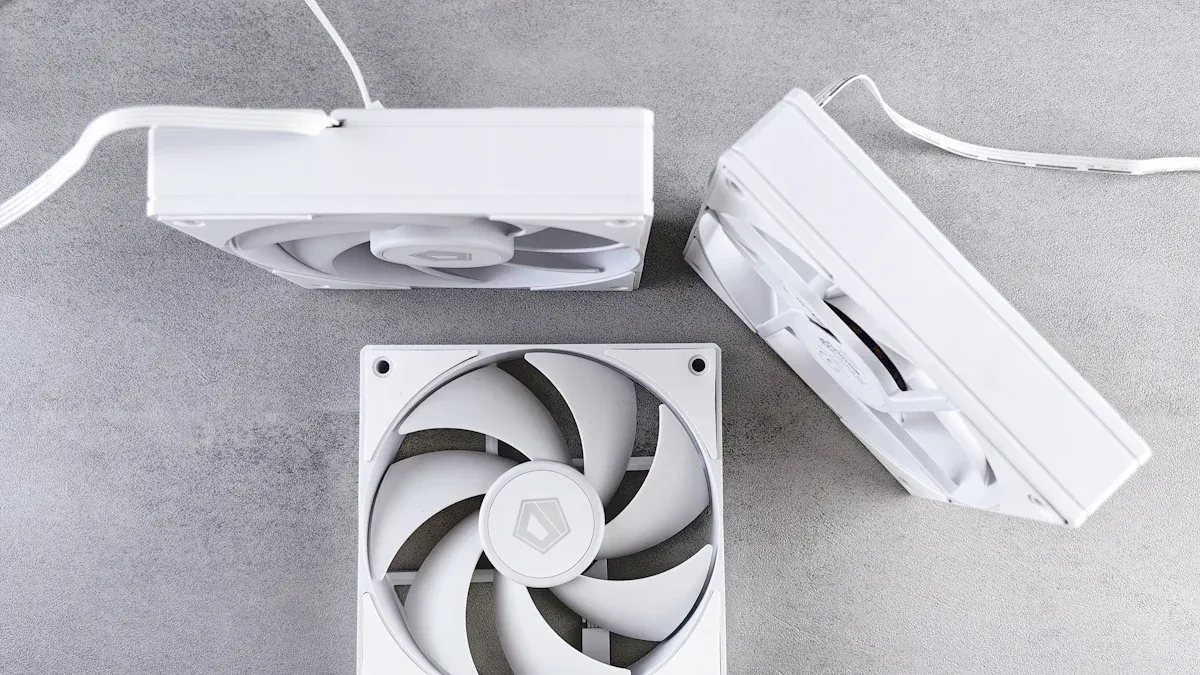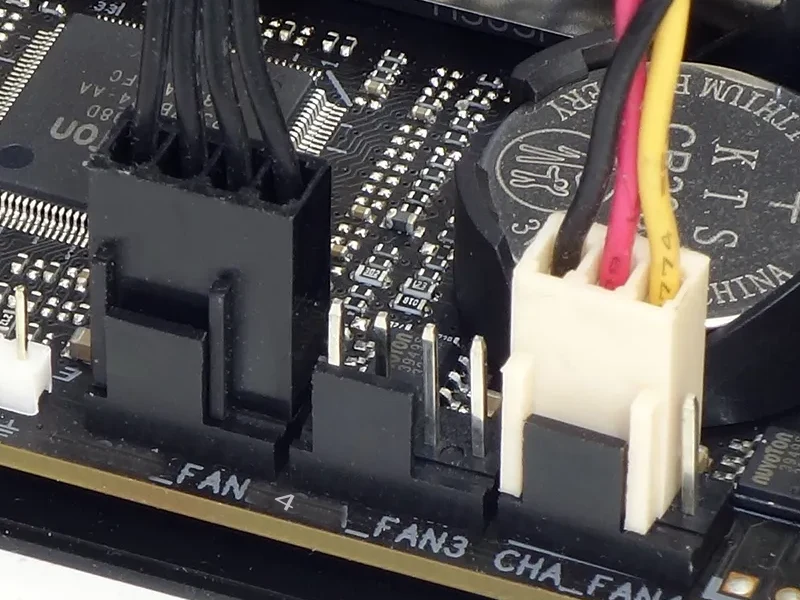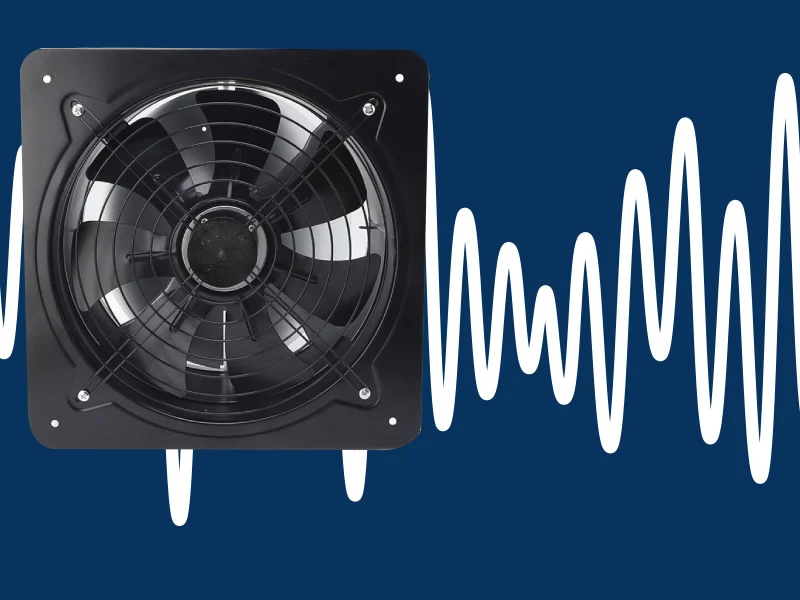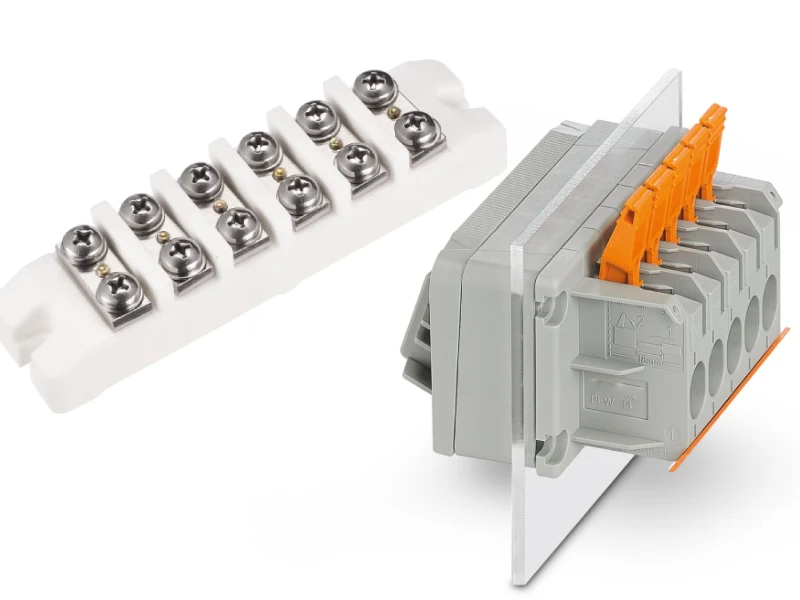When you think about cooling reliability in your facility, you might not realize how much structured cabling shapes system safety. Good cabling keeps fans, AC units, and PLCs talking to each other without a hitch. Linkwell knows this better than anyone, offering cabinet cooling solutions that combine high-quality cabling with advanced products like the Cabinet Air Conditioner, Electrical Enclosure Fan, and DC Fan. Cooling Reliability: How Structured Cabling Intersects with Fans isn’t just a concept—it’s the backbone of safe, efficient operations.
Key Takeaways
- Structured cabling is essential for effective cooling. It ensures proper airflow, preventing hot spots and equipment overheating.
- Using high-quality cables reduces the risk of electrical failures. Choose materials that can withstand higher temperatures for better safety.
- Regular maintenance of cables and cooling systems is crucial. Inspect for wear and dust buildup to keep everything running smoothly.
- Organized cable management enhances system efficiency. Neat cables allow for better airflow and easier access for repairs.
- Investing in quality cabling and cooling products saves money in the long run. It reduces maintenance costs and prevents costly repairs.
Structured Cabling in Cooling Reliability

Cabling’s Role in Fan and AC Performance
You might think fans and air conditioners do all the heavy lifting when it comes to keeping your cabinets cool. The truth is, structured cabling plays a huge part in making sure these cooling systems work the way you expect. When you organize cables properly, you help air flow freely inside your cabinets. This stops hot spots from forming and keeps your equipment safe from overheating.
Here’s how structured cabling makes a difference:
- Organized cable management keeps wires neat, which lets cool air move around easily.
- Good cable routing helps you avoid damage from overheating and extends the life of your equipment.
- Following industry standards boosts the efficiency of your cooling systems.
If you use the right cabling materials, you add another layer of protection. Take a look at this quick comparison:
| Material Type | Maximum Operating Temperature | Effects of Exceeding Temperature |
|---|---|---|
| PVC | 70°C (158°F) | Insulation weakens, cracks, or melts, leading to short circuits and fire hazards. |
| XLPE | 90°C (194°F) | Similar risks as PVC, but can withstand higher temperatures. |
When you choose high-quality cables, you lower the risk of electrical failures. You also help prevent open or short circuits, which can happen if cables get damaged or worn out. If you ignore cable quality, you might face problems like electromagnetic interference or even system shutdowns.
Environmental factors matter too. If your cabinet gets too hot or too humid, cables can break down faster. Keeping the temperature between 70°F and 75°F and humidity between 40% and 60% helps your cooling system and cabling work together for better reliability.
Tip: Always plan your cabling layout before installation. This makes it easier to fit everything in limited space and helps you avoid tangled wires that block airflow.
Linkwell Solutions for Reliable Cooling
You want your cooling systems to run smoothly and keep your equipment safe. Linkwell’s products make this possible by combining advanced cooling technology with smart cabling solutions. When you use Linkwell’s Cabinet Air Conditioner, Electrical Enclosure Fan, or DC Fan, you get more than just cool air—you get peace of mind.
Here’s what Linkwell brings to the table:
- Cabinet air conditioners keep temperatures stable with refrigerants, so your sensitive electronics stay safe.
- Electrical enclosure fans pull in cool air and push out hot air, stopping heat from building up.
- DC fans offer precise airflow management, which helps you control temperature and humidity inside your cabinets.
- Air-to-air heat exchangers move heat outside without mixing air streams, keeping your system clean and efficient.
Linkwell’s cooling products work best when paired with high-quality structured cabling. This combo helps you:
- Prevent equipment failure and downtime by keeping internal temperatures below critical levels.
- Protect PLCs, relays, and sensors from heat damage.
- Lower repair costs and avoid production delays.
- Meet strict safety standards, which is important for bulk buyers and system integrators.
If you upgrade to better cabling, you might pay more upfront, but you save money in the long run. You spend less on maintenance, and you avoid costly repairs. Labor costs can vary, but investing in quality means fewer headaches later.
Cooling Reliability: How Structured Cabling Intersects with Fans is not just about keeping things cool. It’s about making sure every part of your system works together for maximum safety and efficiency. When you choose Linkwell, you get reliable cooling and strong cabling that help your facility run smoothly.
Data Integrity and PLCs in Cooling Systems
PLC Data for Safe Operations
You rely on PLCs to keep your cooling systems running safely. These controllers collect data, process signals, and make decisions that protect your equipment from overheating. When PLCs get accurate information, they can adjust fan speeds, open or close valves, and keep temperatures steady. If the data gets scrambled, your cooling system might not respond fast enough. That can lead to hot spots or even system shutdowns.
PLCs need clean signals to work well. Electrical noise, like electromagnetic interference (EMI) or radio frequency interference (RFI), can mess with those signals. If you use shielded cables and separate power lines from signal lines, you help your PLCs avoid these problems. Good grounding also keeps unwanted noise away. You want your PLCs to make the right decisions every time.
Let’s look at a real-world example. In a GPU-based AI training cluster, a Mitsubishi Electric PLC managed a modular Coolant Distribution Unit. The PLC adjusted pump speeds and valve positions in real time. This quick response stopped overheating and kept the system safe. Accurate PLC data transmission made all the difference.
Tip: Always check your PLC connections and cable quality before starting up your cooling system. Small mistakes can lead to big problems.
Structured Cabling for Accurate Transmission
You want your cooling system to work smoothly. That means your cables need to transmit data without errors. Structured cabling helps you organize everything, so signals travel fast and clean. When you follow best practices, you get reliable data transmission and better cooling performance.
Here’s what you should focus on:
- Keep cables neat and separated to prevent cross-talk and electrical noise.
- Use shielded cables for sensitive signals.
- Make sure airflow isn’t blocked by tangled wires.
- Organize your cabling for easy upgrades and repairs.
Efficient cable management supports good airflow, which keeps your equipment cool. When you set up a structured cabling system, you make your data center more flexible and efficient. You also help your cooling system respond quickly to changes. Cooling Reliability: How Structured Cabling Intersects with Fans depends on accurate data transmission and smart cable organization. If you get this right, you protect your equipment and keep your operations safe.
Best Practices for Cabling and Cooling Integration

Standards and Installation Tips
You want your cooling system to run smoothly, so following the right cabling standards is a must. These standards help you avoid problems and keep your equipment safe. Here’s a quick look at the most important ones:
| Standard | Description |
|---|---|
| ANSI/TIA-568 | Governs various aspects of wiring and cabling, including cable types and system architectures. |
| ANSI/TIA-568.3-D | Focuses on fiber optic cabling standards for high-bandwidth applications. |
| ISO/IEC 11801 | International standard for IT network cabling, covering both optical fiber and copper cables. |
When you install cabling for cooling systems, you need to pay attention to the details. Here are some tips that make a big difference:
- Use Velcro straps instead of zip ties. Velcro is reusable and less likely to damage your cables.
- Keep power and data cables separate. This helps you avoid electromagnetic interference and keeps your data clean.
- Respect the bend radius of every cable, especially fiber optics. Sharp bends can break cables or mess up signals.
- Document everything. Diagrams and records save you time when you need to troubleshoot or upgrade.
- Choose quality accessories. Reliable cable trays and organizers from trusted suppliers like Linkwell Electrics help you keep things neat.
- Clean your cable pathways often. Dust can block airflow and hurt cooling performance.
Plan your cable routes before you start. Label every cable clearly. Install cables gently and secure them without over-tightening. These steps protect your cables and help maintain airflow for your Linkwell cooling products.
If you want to boost your skills, consider the Certified Network Cable Installer (CNCI®) program. This ten-day course teaches you everything you need to know about copper and fiber installations. You’ll learn best practices and meet industry standards.
Maintenance and Monitoring
You can’t just set up your cabling and forget about it. Regular maintenance keeps your cooling system reliable. Inspect cables for wear, loose connections, or dust buildup. Clean your cabinet fans and air conditioners often. Replace filters and check for blocked airflow.
Monitor your system with smart controls. Linkwell’s cooling products work well with digital thermostats and modbus-ready controllers. These tools help you spot problems early and keep your system running smoothly.
Cooling Reliability: How Structured Cabling Intersects with Fans depends on your attention to detail. If you follow these best practices, you’ll keep your equipment safe and your cooling system efficient.
Real-World Reliability: Failures and Successes
Issues from Poor Cabling
You might think a few messy cables won’t hurt your cooling system. The truth is, poor cabling can cause big problems. When wires get tangled or blocked, airflow drops. Fans and air conditioners work harder, but heat still builds up. You see equipment slow down or even shut off. Sometimes, sensors send wrong signals because of electrical noise. That leads to false alarms or missed warnings.
Here are some common issues you might face:
- Overheating in control cabinets
- Random system shutdowns
- Increased repair costs
- Data errors from signal interference
- Shortened lifespan of fans and AC units
Note: If you ignore cable management, you risk damaging expensive electronics. You also spend more time fixing problems that you could have prevented.
Let’s look at a quick table showing the impact of poor cabling:
| Problem | Result |
|---|---|
| Tangled wires | Blocked airflow, hot spots |
| Unshielded cables | Data errors, EMI issues |
| Loose connections | System instability |
| No documentation | Slow troubleshooting |
Success with Linkwell Structured Solutions
You want your cooling system to run smoothly every day. Linkwell helps you achieve that with smart cabling and advanced cooling products. When you use Linkwell’s Cabinet Air Conditioner, Electrical Enclosure Fan, and DC Fan, you get reliable performance. You see stable temperatures and fewer breakdowns.
Here’s how Linkwell makes a difference:
- Organized cabling keeps airflow strong and steady.
- Shielded cables reduce electrical noise, so PLCs get clean data.
- Digital controls and modbus-ready systems let you monitor everything in real time.
- High-quality fans and AC units work together with your cabling for maximum safety.
Tip: You can prevent downtime and save money by choosing Linkwell’s structured solutions. Your team spends less time on repairs and more time on productive work.
Cooling Reliability: How Structured Cabling Intersects with Fans shows you that smart cabling and quality cooling products go hand in hand. When you follow best practices and trust Linkwell, you protect your equipment and keep your operations running smoothly.
You see how Cooling Reliability: How Structured Cabling Intersects with Fans shapes safer, more efficient systems. When you choose the right cabling and Linkwell’s advanced cooling products, you protect your equipment and data. Want to boost reliability? Try these steps:
- Create a cable management strategy for better airflow.
- Organize cables for easy access and maintenance.
- Use color coding and labeling for quick troubleshooting.
- Pick heat-resistant cables and energy-efficient cooling systems.
Stay proactive with regular checks and upgrades. Your attention to detail keeps your facility running strong.
FAQ
What is structured cabling, and why does it matter for cooling?
Structured cabling is an organized way to run cables in your cabinets. It keeps wires neat and helps air flow better. You get fewer hot spots and your cooling fans work more efficiently.
How do Linkwell cooling products connect with my cabling system?
You can easily connect Linkwell’s Cabinet Air Conditioner, Electrical Enclosure Fan, or DC Fan using standard wiring. These products support digital controls and work with most structured cabling setups.
Can poor cabling really cause my cooling system to fail?
Yes! Messy or damaged cables block airflow and cause electrical noise. Your fans and AC units might overheat or shut down. Good cable management keeps everything running smoothly.
How often should I check my cables and cooling equipment?
You should inspect your cables and cooling gear every few months. Look for dust, loose connections, or worn-out parts. Regular checks help you catch problems early.




